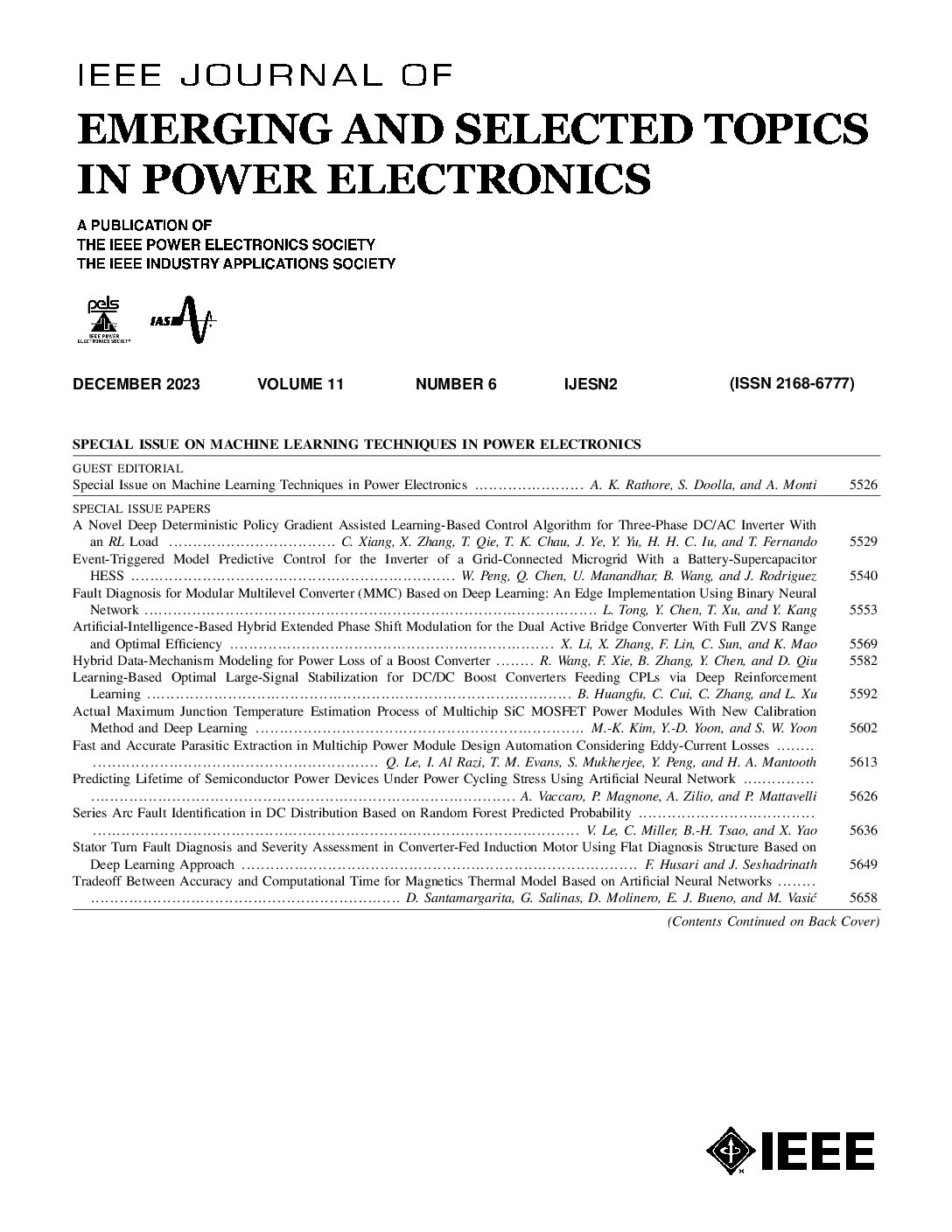基于腔腔谐振器的旋转磁场全方位充电WPT系统
IF 4.9
2区 工程技术
Q1 ENGINEERING, ELECTRICAL & ELECTRONIC
IEEE Journal of Emerging and Selected Topics in Power Electronics
Pub Date : 2025-04-03
DOI:10.1109/JESTPE.2025.3557473
引用次数: 0
摘要
与传统的感应无线电力传输(WPT)技术相比,基于准静态腔谐振器的WPT (QSCR-WPT)系统可以显著抑制房间尺度空间内传输效率的下降。然而,通常需要一个导电极在腔的中间,以获得均匀的磁场。此外,接收机角度的变化会引起效率和输出功率的波动。为了解决这些问题,在QSCR-WPT系统中引入了双励磁方法来调制磁分布均匀、方向可控的旋转磁场。这种特殊的磁场配置在本文中被称为具有极无关(UMPI)模式的无处不在的磁场。与现有研究中报道的极点依赖(PD)和PI模式相比,UMPI模式对角度和位置变化都具有更好的容忍度。在此基础上,建立了谐振腔的等效电路模型,并首次利用反射阻抗方程推导了线圈与谐振腔之间的电参数。最后,实验结果表明,接收机在腔内大部分空间位置实现了全角度无线充电覆盖(超过90%的空间)。本文章由计算机程序翻译,如有差异,请以英文原文为准。
Cavity Resonator-Based WPT System Utilizing Rotating Magnetic Field for Omnidirectional Charging
Compared to traditional inductive wireless power transfer (WPT) technology, quasi-static cavity resonator-based WPT (QSCR-WPT) systems can significantly inhibit transmission efficiency deterioration within room-scale space. However, a conductive pole is required generally in the middle of the cavity for a uniform magnetic field. Besides, the changes in receiver angles may cause fluctuations in efficiency and output power. To address these issues, a dual-excitation method is introduced to modulate a rotating magnetic field with uniform magnetic distribution and controllable direction in a QSCR-WPT system. This particular magnetic field configuration is referred to as the ubiquitous magnetic field with pole-independent (UMPI) mode in this article. Compared to the pole dependent (PD) and PI modes reported in the existing research, the UMPI mode exhibits superior tolerance to both angular and positional variations. Furthermore, the equivalent circuit model of the resonant cavity is established, and the electrical parameters between the coil and the resonant cavity are derived for the first time using the reflected impedance equation. Finally, the experimental results indicate that the receiver achieves full-angle wireless charging coverage in the majority of spatial locations within the cavity (over 90% of space).
求助全文
通过发布文献求助,成功后即可免费获取论文全文。
去求助
来源期刊

IEEE Journal of Emerging and Selected Topics in Power Electronics
ENGINEERING, ELECTRICAL & ELECTRONIC-
CiteScore
12.50
自引率
9.10%
发文量
547
审稿时长
3 months
期刊介绍:
The aim of the journal is to enable the power electronics community to address the emerging and selected topics in power electronics in an agile fashion. It is a forum where multidisciplinary and discriminating technologies and applications are discussed by and for both practitioners and researchers on timely topics in power electronics from components to systems.
 求助内容:
求助内容: 应助结果提醒方式:
应助结果提醒方式:


